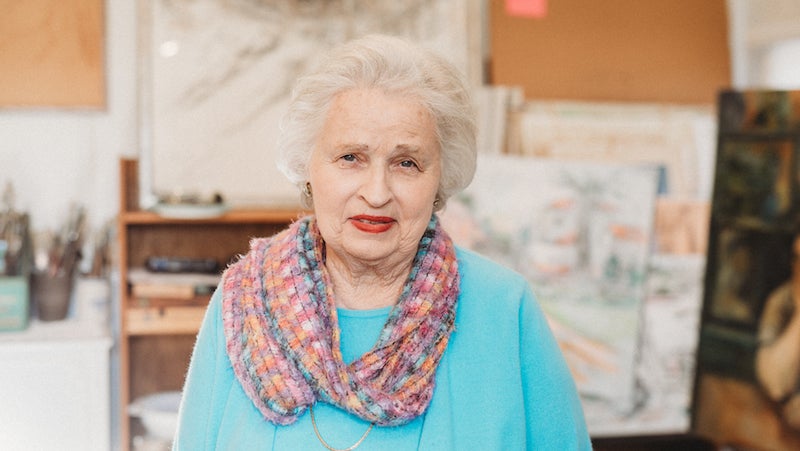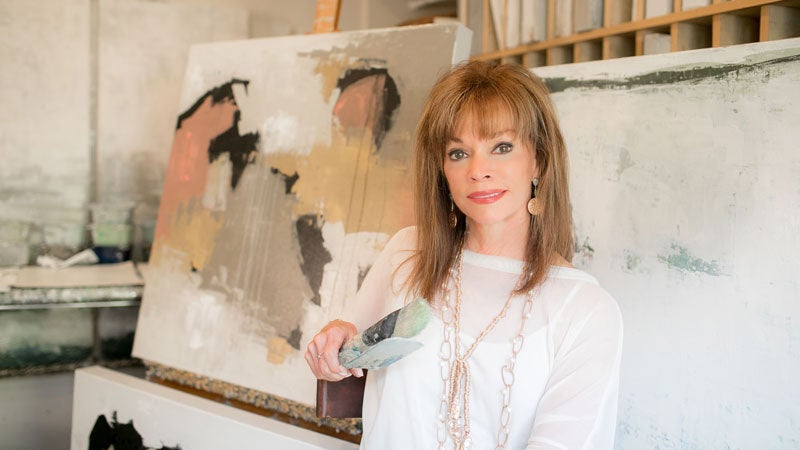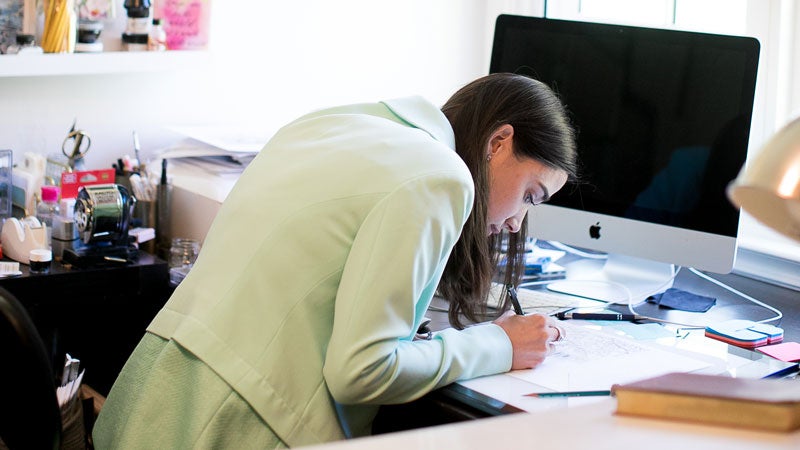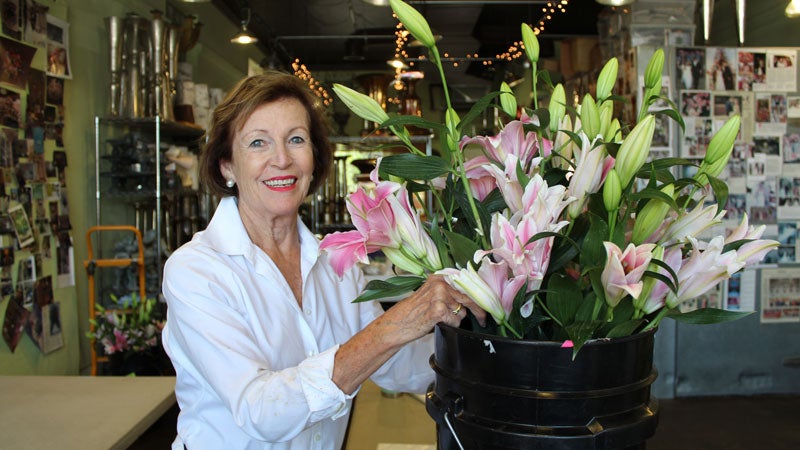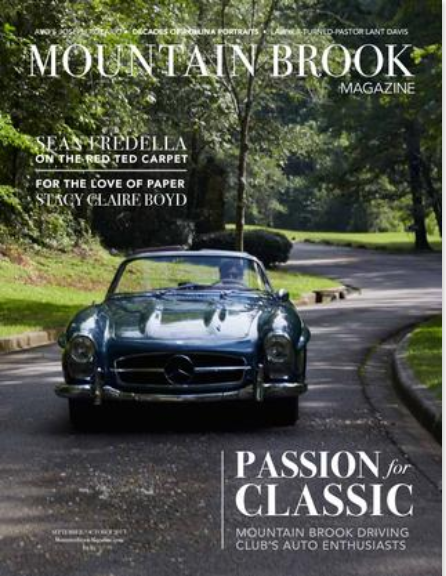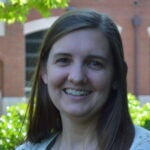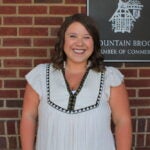Like many lifelong artists, Miriam McClung’s work separates into periods. The painting in her entry hallway is part of her “New York period” from the post-grad year she spent living in the city. It’s also the painting she carried across nearly 15 blocks to show a New York University professor since the canvas wouldn’t fit in a taxi.
But even though she’s learned from great artists across the country such as renowned abstract expressionist Mark Rothko and portrait painter Jerry Farnsworth, her most significant periods and personal styles are tied to Mountain Brook. “We have the prettiest city in the world. We’ve got so many wonderful places here, and nothing is more fun than to just go out and paint,” she says.
One theme she paints in is a spiritual one, yet her works still tie to her hometown. While you don’t see many people set biblical stories in Birmingham, Miriam paints in a tradition that artists have been doing for centuries – tying timeless and meaningful stories to the landmarks they call home.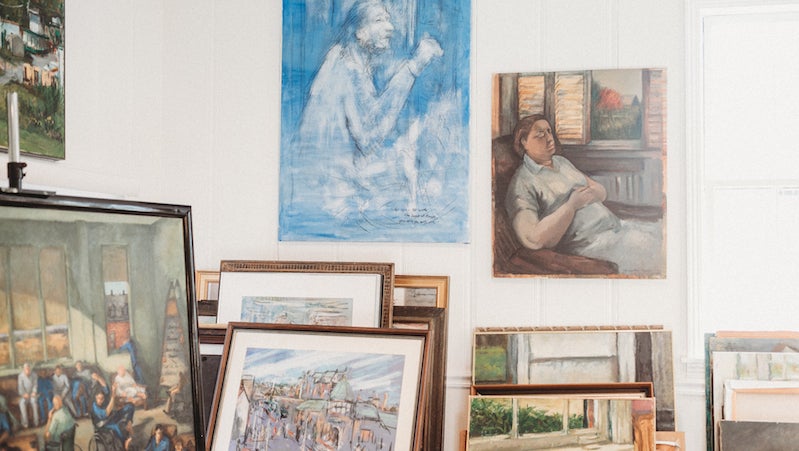
And her home is one that Miriam has known for more than 80 years, having grown up in Mountain Brook while the city was growing up itself. “The Birmingham in her mind spans decades of roads, buildings, churches, events and people, and those places are still alive to her,” says her son, Frank McClung, who also manages Miriam’s art business. “She sees this city as a painting.”
Although Mountain Brook Elementary did not offer art classes when Miriam attended, her mother enrolled her in lessons at Louise Cone’s Highland Avenue studio, one that Miriam remembers being decked in exquisite portraits that peaked her interest in painting. She was later introduced to abstract styles at Shades Valley High School and would continue building her skills at the University of Alabama and in New York.
Miriam comes from “a family of doers,” including her grandfather, who helped get Vulcan cast and exhibited at the 1904 World’s Fair, and her father and uncle, who developed Eastwood Mall and Office Park. However, her family always supported her talent and passion for drawing and painting. “My mother always loved beauty,” Miriam says, remembering her childhood home on Canterbury Road and its beautiful garden.
Among stacks of large canvases in her studio, you will find paintings of the Mountain Brook villages as well as sites across the area. Some depict stories like Mary and Joseph’s trip to Bethlehem or Jesus entering Jerusalem, set in Birmingham and Crestline, respectively. Near these works, you will also find abstracts from her college days, experimental drawings from New York, and portraits of the people and moments in her life that have inspired her.
That’s how all of Miriam’s pieces across 75 years weave into one body of work—each one tells a narrative that has struck a chord with her at some point in her life. One painting in her studio captures a nurse who took care of her grandmother at the end of her life. The day and night nurses often sat for Miriam, who was so interested by these strangers and their grit.
Outside of her studio, Miriam’s home too becomes a gallery, with walls filled with large canvases from all periods of her life. Her hallway and bedroom display the works that mean the most to her—paintings of her grandson “with the spiky hair,” her crib for Frank before he was born, and her old Montclair Road apartment with blue walls and avocado green carpet.
Miriam has recently turned to working in pastels as painting becomes more physically difficult for her over time. Her lines, however, bring the same movement and color that define the rest of her work. “I’ve noticed that other artists like Degas and Corot also turned to pastels when they were older,” she says.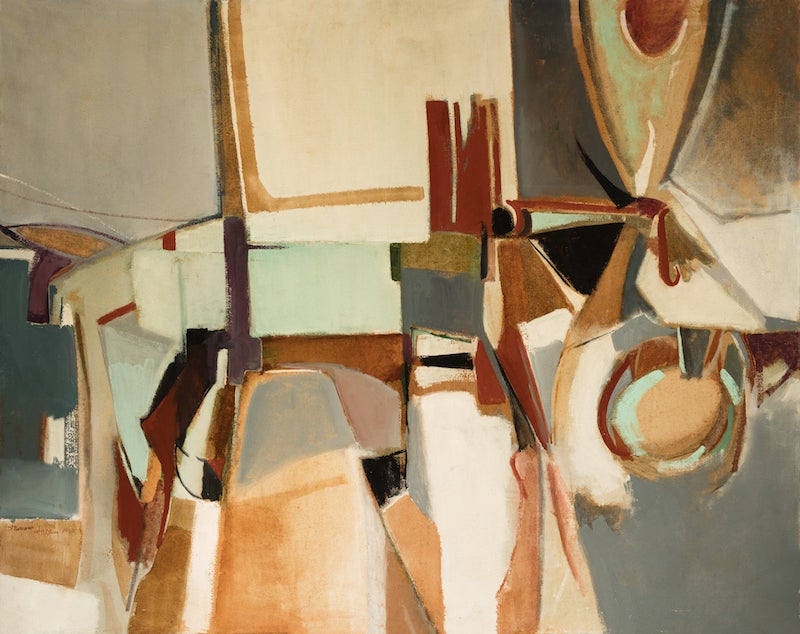
For the last couple of years, Frank has been cataloguing Miriam’s works, recording the history of her career, and running her website and social media accounts to help share her work and talent with others. “I want people to appreciate the contribution her generation has made to Birmingham’s art scene,” he says.
Both Frank and Miriam hope to see historians, universities and museums recognize and collect local art as well as spiritual art. The more Frank records her pieces, the more he confirms that his mother’s beautiful pieces and her endless creative drive are so valuable.
Miriam has never stopped drawing or painting throughout the stages of her life, even though her style has grown and shifted. She hopes to soon explore sculpture, which she thinks, like pastel, will be easier to see and control. And, with that, begins a new period of her art career.
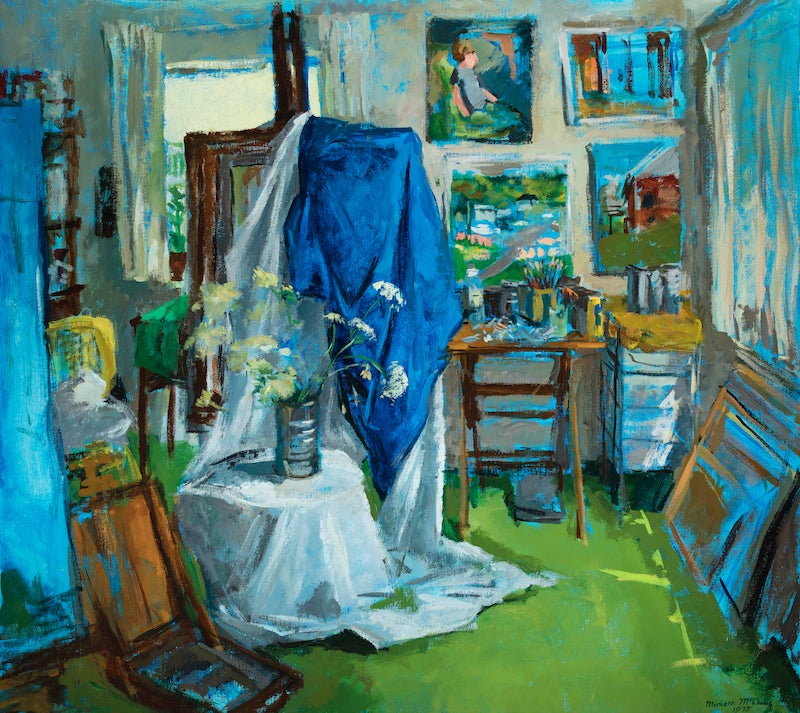 Miriam’s Life Timeline
Miriam’s Life Timeline
1953 – 1956: University Years
After painting throughout her childhood, Miriam explored abstraction at the University of Alabama. Many of her classmates, like Bill Christenberry and Dale Kensington, went on to become well-known Alabama artists. In school she took an extended art tour in Europe and studied for a summer at the University of Colorado, where she took a course from Mark Rothko (and didn’t realize he was famous until she got back home).
1957 – 1958: New York City
Miriam moved to New York City with a few college friends shortly after graduating. Here, she studied at the Art Students League, worked at the Metropolitan Museum of Art, and made her way around some of the art circles. Fellow Alabama artist Doris Wainwright Kennedy even introduced her to Salvador Dali at a party. Miriam’s New York period includes more experimentation with an abstract style.
1959 – 1984: Returning Home
Miriam’s home in Birmingham inspired decades of painting. Even when she was a full-time mother and caretaker, she continued to draw and paint in the time she could find. Miriam also took classes from artists throughout the city and around the Southeast to gain new technical skills in painting and portraiture.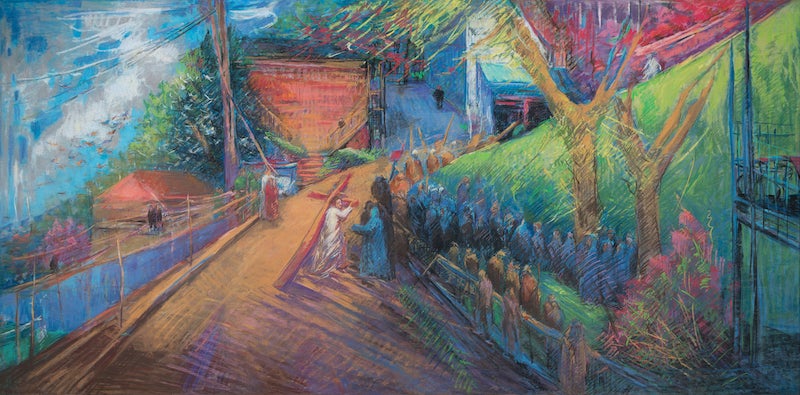
1985 – Now: Biblical Birmingham
Her 50th birthday brought Miriam to a new artistic realization. “It seemed like I’d been doing all this for me all these years, but it was time for me to do something for the Lord,” she says. Her spiritual art includes a 20-year project capturing the Stations of the Cross in different Birmingham locations, a project that St. Peter’s Anglican Church in Mountain Brook displayed for Easter.

